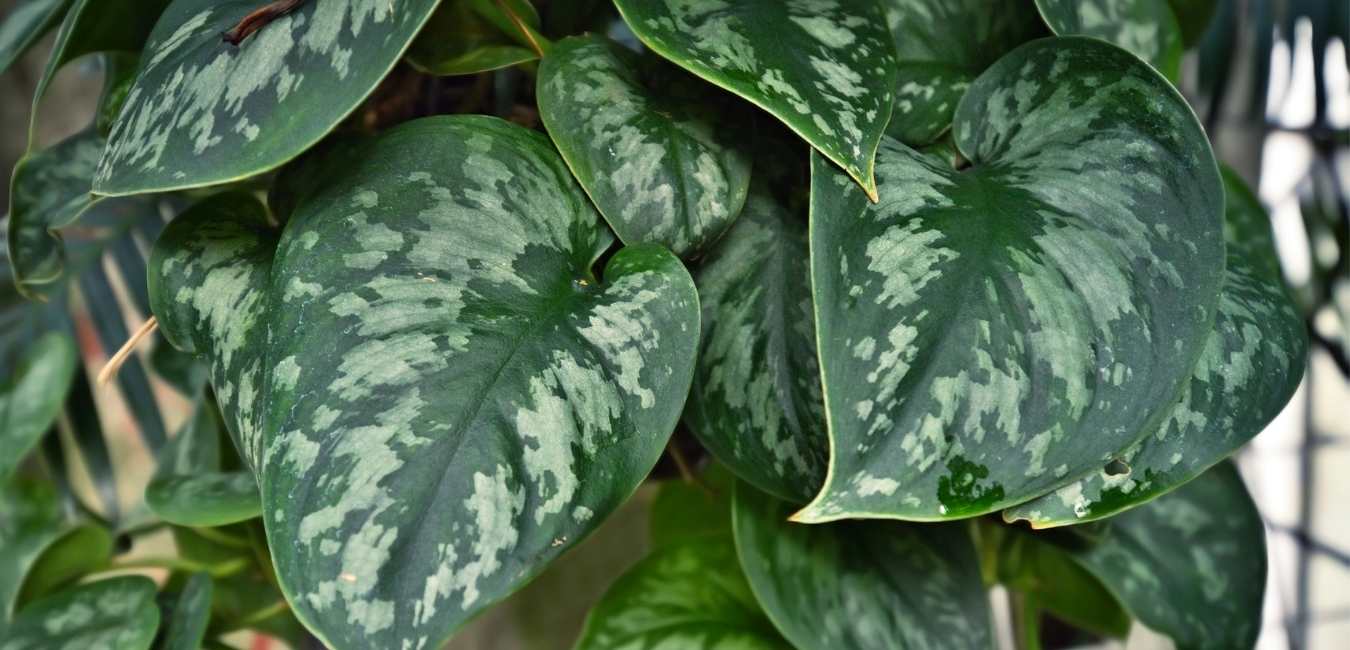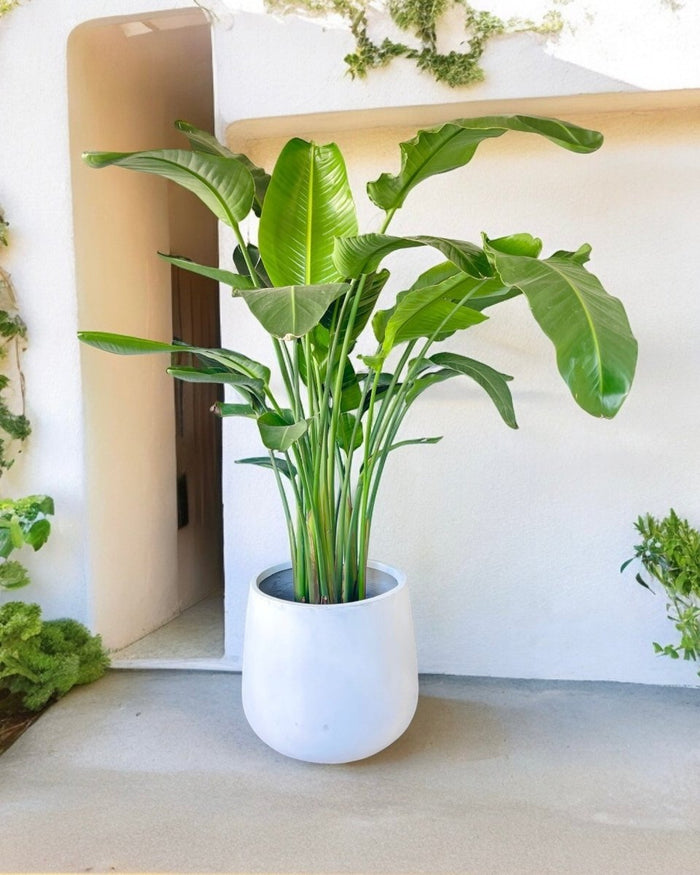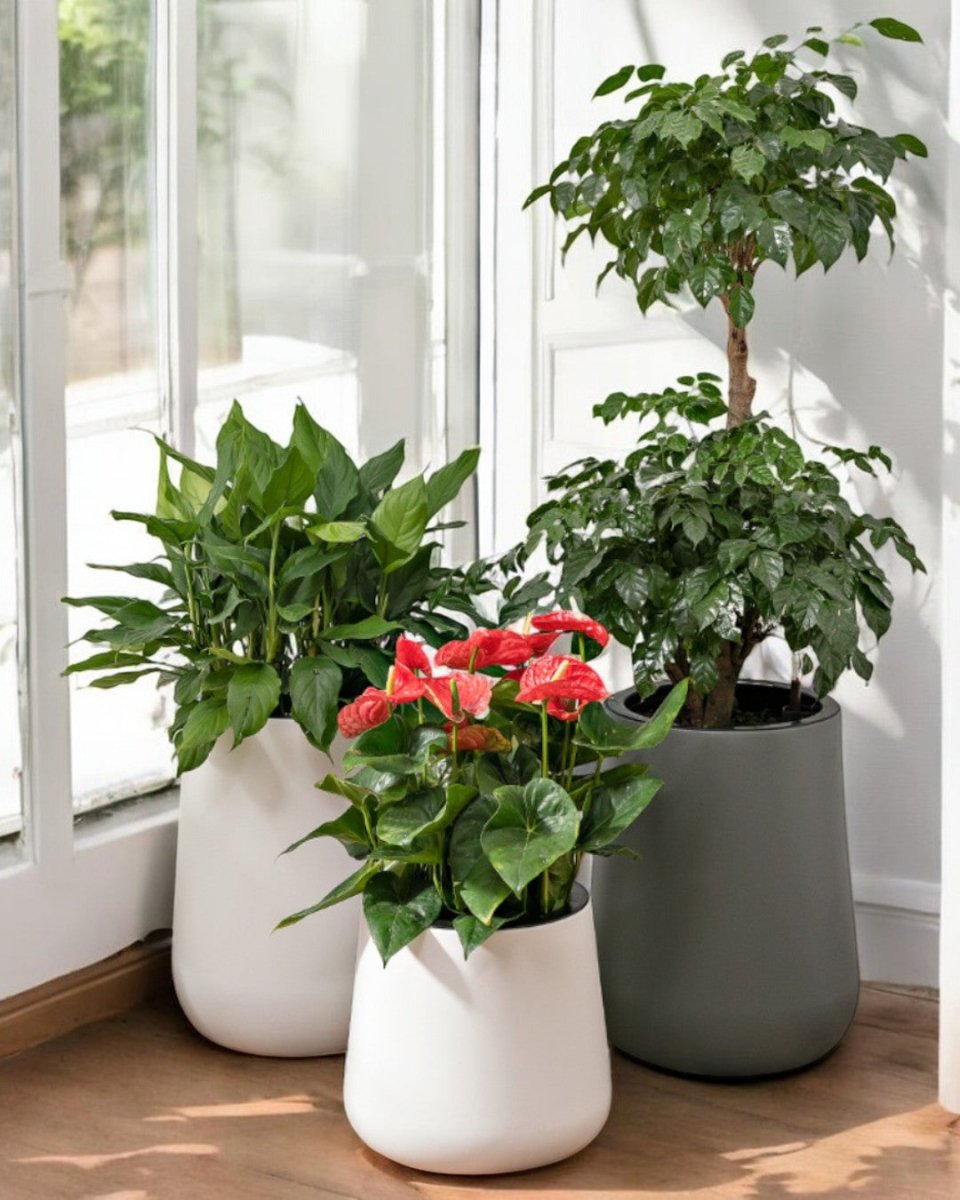Scindapsus plants or Satin Pothos feature silvery dots and splashes against dark green velvety foliage. Its stunning heart-shaped leaves will gracefully cascade down its pot, adding interest and beauty to a room.
Search plants, planters, garden accessories and more.
-
Sale
-
Plants
-
Pots
-
Care
-
Decor
-
Gifts
-
Services
-
Business
Free Delivery Above $99 | Shop Now
What's New
-
 Hello 2026! Up to 25% off→
Hello 2026! Up to 25% off→ -
 🎁 Corporate Gifts! 🎁→
🎁 Corporate Gifts! 🎁→ -
 Transform your space with our Plant Styling Services!→
Transform your space with our Plant Styling Services!→ -
 Low Light Corner?→
Low Light Corner?→ -
 Login to Earn & Redeem Points!→
Login to Earn & Redeem Points!→ -
 🎉 Making buying plants easy! 🎉→
🎉 Making buying plants easy! 🎉→

Hello 2026! Up to 25% off
Upgrade your decor now! Automatic tiered discounts mean bigger savings on plants, planters & more. Watch your progress bar fill up as you shop! Sale ends soon.
Shop Plants
🎁 Corporate Gifts! 🎁
Planning corporate gifts for the festive season? Make a lasting impression with our premium plant gifts! Perfect for clients, partners, or employees, our curated selection of plants is both meaningful and elegant. Choose from a variety of options that fit any budget. Order now and ensure your corporate gifts are delivered in time for the celebrations.
Bulk Gifting
Transform your space with our Plant Styling Services!
Looking to refresh your space for the year-end festivities? Elevate your home decor with our Plant Styling service! Whether it’s a cozy corner or a grand living room, our expert tips will help you transform your space into a green oasis. Perfect for setting the holiday mood! Get inspired and start styling your space with our premium plant collections.
Start your Project
Low Light Corner?
No worries! Our Plant Lights are here to help your plants grow! Specially designed and made for houseplants.
Shop Lights
Login to Earn & Redeem Points!
Login and automatically enrol into our Rewards program, earning you points, and get exclusive deals and discount
Login Now
🎉 Making buying plants easy! 🎉
We have made buying plants even easier, with our customer service team, equipped to provide you with a plant recommendations. Hit us up on our chat channels to get started!
Shop NowUp to 25% off with our New Year Sale!
Free delivery above 99SGD
🎁 Free Gift Above $120

Satin Pothos: Information and Plant Care Guide
Varieties from our listing
Interested to buy a plant from this group?
See what we have available HERE
Below is a general care guide for Satin Pothos which can slightly differ depending on variety.
Light & Temperature
Satin Pothos prefer bright, indirect light. It is quite tolerant to lower light conditions but it may start to lose its striking leaf markings.
This plant prefers warm temperatures. They do not like being exposed to cold air as it will damage its foliage.
Watering, Humidity & Misting
Water your Satin Pothos once the top 1-3 inches of the soil has dried out. It can withstand under watering but it is much less tolerant of overwatering. It will also show you when it’s thirsty by its curling or droopy leaves.
Satin Pothos thrives in humid tropical climates of its origin, so for it to grow healthy indoors, it requires those humid conditions being replicated. If the air is dry, mist the plant regularly to boost humidity or use a pebble tray of humidifier.
Soil and Repotting
Use all-purpose houseplant potting mix. Repot your Satin Pothos when the plant outgrows its pot. It has a relatively quick rate of growth so you will probably need to repot to freshen the soil and encourage healthy new growth once a year.
Propagation
Take at least 4-5 inches of tip cuttings and insert them into moist potting mix. Cuttings root quickly in about a month.
Fertiliser
Use a balanced fertiliser formulated for houseplants. Follow the directions on the label of our Down to Earth. organic plant food.
Toxicity
Satin Pothos are toxic if ingested and should be kept out of the reach of children and pets.
Possible Issues
Under the right care and conditions, your plant will grow happy and healthy. But here are some issues you may encounter while caring for a Satin Pothos:
Spider mites and scales - When spotted, treat immediately with a neem oil.
Black and mushy stems and foliage - This is roots rotting. Take out your plant from its container and remove any affected roots and stems. Repot the remaining healthy parts in a clean container with fresh soil.
Brown leaves - This can be caused by too much sun or too little humidity. Adjust your care and conditions given to the plant.
Yellowing leaves - Probably a sign that you are overwatering your Satin Pothos. Allow the soil to partially dry out between waterings.
- Regular Price
- $12.00
- Sale Price
- $12.00
- Regular Price
- $18.00
- Unit Price
- /per
TumbleweedPlants.com
Live Chat 💬
Whatsapp:+65 80561106
getintouch@tumbleweedplants.com
514 Chai Chee Lane (Office & Warehouse)
-Strictly not open to walk-in
Company
Helpful Links
Join Our Community
Join 40,000+ plant lovers and get care tips & inspiration.
About
TumbleweedPlants.com is an independent plants retail brand, established in Singapore in 2016. We make stylish indoor plants easy and accessible to all with great looking houseplant varieties, the biggest selection of planters and indoor plant care essentials delivered to your door.
Shop with confidence from the Best Plant Home Decor Online Store Today!












































